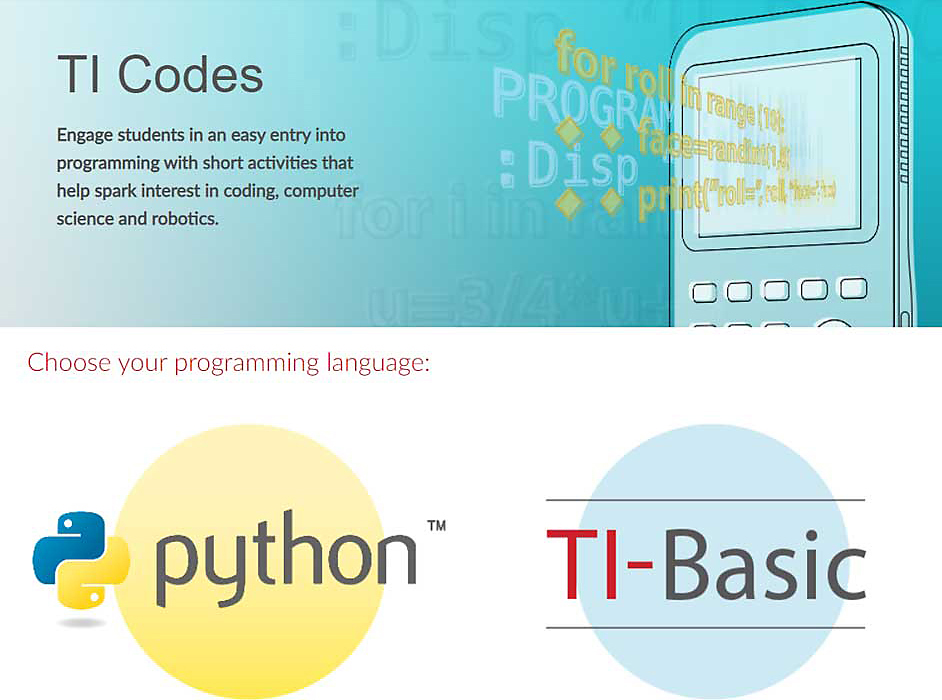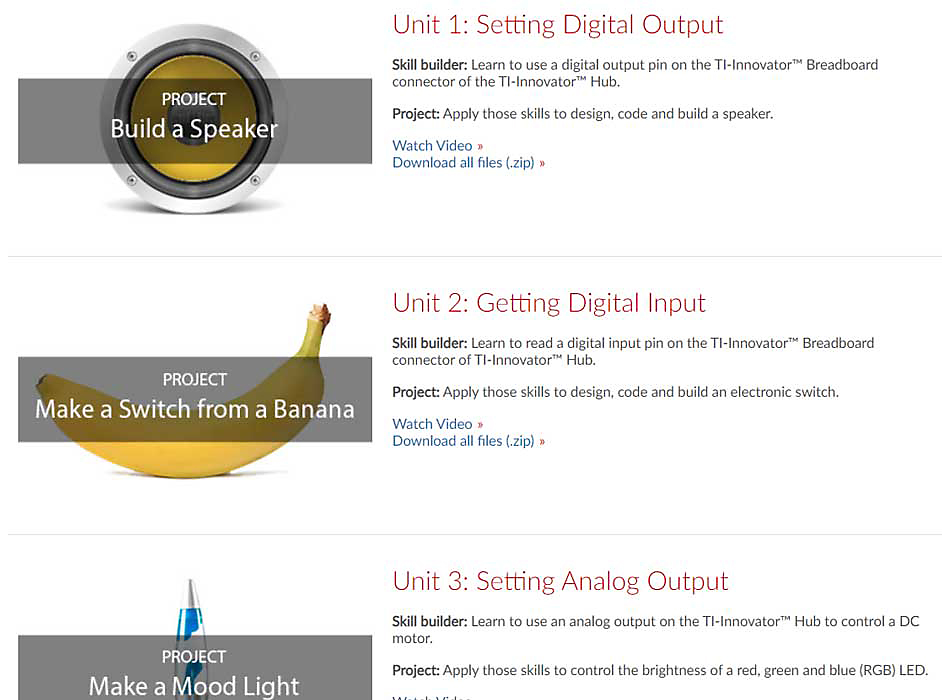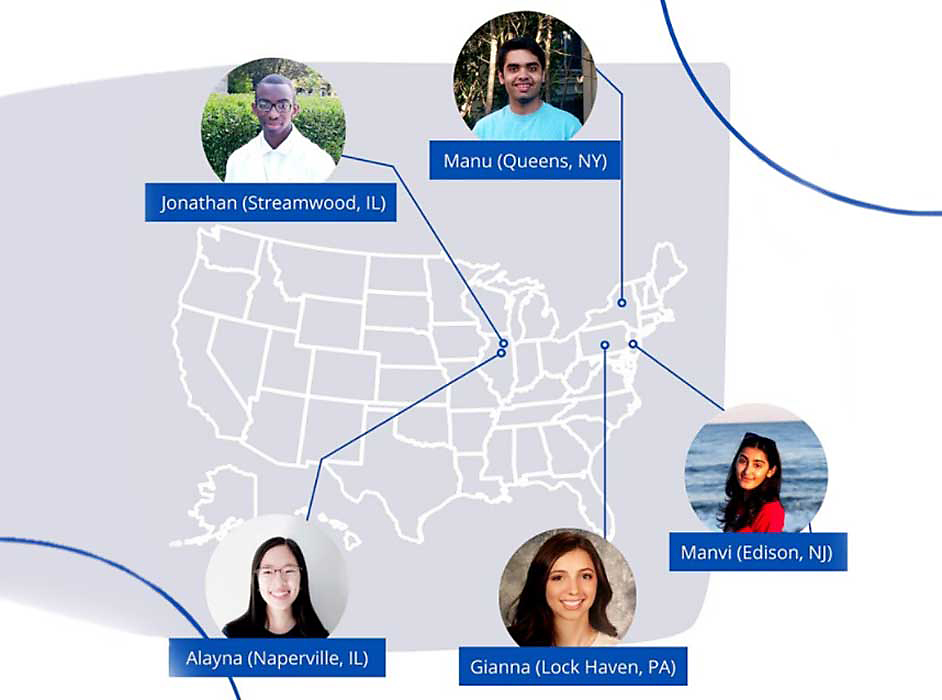Tips for First-Timers Entering the TI Codes Contest
Have you heard of the TI Codes Contest? Perhaps you have seen some of the videos from previous contest submissions and thought that it looked fun, but you or your students didn’t have the knowledge or skills to be competitive. I’m here to bust any misconceptions about our annual contest and provide some tips to those of you who might be entering for the first time.
For background: Every year, students from around the country participate in the annual TI Codes Contest by building and coding working prototypes of devices to solve some kind of real-world problem (big or small). We’re talking everything from an automatic pizza slicer to a free-flying robot that uses ultraviolet light to sterilize the International Space Station.
Get inspired by checking out some of the finalist videos from last year’s competition:

Many of the students on the winning teams have had previous STEM and coding experience. But what if students don’t have that experience but still want to participate in the contest? We recommend students start building those skills with small projects and experiences using many of the free resources Texas Instruments (TI) has to offer.
Step 1
Step one is to learn a little coding. To do this, students will need access to a TI graphing calculator (preferably a TI-Nspire™ CX, TI-Nspire™ CX II or TI-84 Plus CE graphing calculator). But any TI graphing calculator will work! If a student doesn’t have a calculator, check with your school’s principal to see if they can lend calculators to interested students.
Once students have a graphing calculator, encourage them to check out 10 Minutes of Code. These short lessons introduce students to the basics of coding in — you guessed it — 10 minutes and help build understanding of math concepts.

Step 2
Step two is to provide students with a project-building opportunity. We recommend filling out a loan form at TIStemProjects.com. Simply click on the red Get Started Now! button to sign your entire class up to participate in building working projects using the TI-Innovator™ Hub with TI LaunchPad™ Board (TI’s microcontroller device), sensors and actuators. TI will send you graphing calculators, TI-Innovator™ Hubs and project materials to borrow for up to 30 days (while supplies are available). The projects have lesson guides and sample code which makes trying this with your class a breeze. I suggest getting started with our Digital Mood Ring project as it’s consistently a crowd pleaser.
Step 3
Ready to take it up notch? Students can try expanding their programming skills using TI’s Path to STEM projects which introduce electrical engineering concepts such as analog and digital input/output, calibration, and feedback and control. Learn how to use a breadboard with components such as resistors, LEDs, motors, capacitors and a host of other useful devices. Check it out!

Last year’s winning team, the Germaphobes, put together several of the skills from the Path to STEM projects. They built a self-contained sanitation device for use on the International Space Station using a TI-Nspire™ CX graphing calculator, a TI-Innovator™ Hub, motors, LEDs and motion detectors. And the students were all from different states and had never met one another — an impressive barrier to overcome. Will your students be the next Germaphobes?

If you are interested in providing STEM and coding experiences for your students but aren’t sure how to get started, please reach out to the TI STEM team at stem-team@ti.com. We are here to help and can provide suggestions, guidance, loaner equipment and online resources at no cost to you.
About the author: Erick Archer is a Market Strategy Manager at Texas Instruments and works with science and STEM teachers in the implementation of TI technology. He is also a former high school science teacher, father of two sons, married to his high school sweetheart and loves baseball.
Tagcloud
Archive
- 2025
- 2024
- 2023
- 2022
-
2021
- January (2)
- February (3)
- March (5)
-
April (7)
- Top Tips for Tackling the SAT® with the TI-84 Plus CE
- Monday Night Calculus With Steve Kokoska and Tom Dick
- Which TI Calculator for the SAT® and Why?
- Top Tips From a Math Teacher for Taking the Online AP® Exam
- Celebrate National Robotics Week With Supervised Teardowns
- How To Use the TI-84 Plus Family of Graphing Calculators To Succeed on the ACT®
- AP® Statistics: 6 Math Functions You Must Know for the TI-84 Plus
- May (1)
- June (3)
- July (2)
- August (5)
- September (2)
-
October (4)
- Transformation Graphing — the Families of Functions Modular Video Series to the Rescue!
- Top 3 Halloween-Themed Classroom Activities
- In Honor of National Chemistry Week, 5 “Organic” Ways to Incorporate TI Technology Into Chemistry Class
- 5 Spook-tacular Ways to Bring the Halloween “Spirits” Into Your Classroom
- November (4)
- December (1)
-
2020
- January (2)
- February (1)
- March (3)
- April (1)
- May (2)
- July (1)
- August (2)
- September (3)
-
October (7)
- Tips for Teachers in the time of COVID-19
- Top 10 Features of TI-84 Plus for Taking the ACT®
- TI Codes Contest Winners Revealed
- Best of Chemistry Activities for the Fall Semester
- Best of Biology Activities for the Fall Semester
- Best of Physics Activities for the Fall Semester
- Best of Middle Grades Science Activities
- November (1)
- December (2)
- 2019
-
2018
- January (1)
- February (5)
- March (4)
- April (5)
- May (4)
- June (4)
- July (4)
- August (4)
- September (5)
-
October (9)
- Art in Chemistry
- Which Texas Instruments (TI) Calculator for the ACT® and Why?
- Meet TI Teacher of the Month: Jessica Kohout
- Innovation in Biology
- Learning With Your Students
- A first-of-its-kind STEM strategy charts path to help educators
- #NCTMregionals Hartford 2018 Recap
- The Math Behind “Going Viral”
- Real-World Applications of Chemistry
-
November (8)
- Testing Tips: Using Calculators on Class Assessments
- Girls in STEM: A Personal Perspective
- 5 Teachers You Should Be Following on Instagram Right Now
- Meet TI Teacher of the Month: Katie England
- End-of-Marking Period Feedback Is a Two-Way Street
- #NCTMregionals Kansas City 2018 Recap
- Slope: It Shouldn’t Just Be a Formula
- Hit a high note exploring the math behind music
- December (5)
- 2017
- 2016
- 2015
